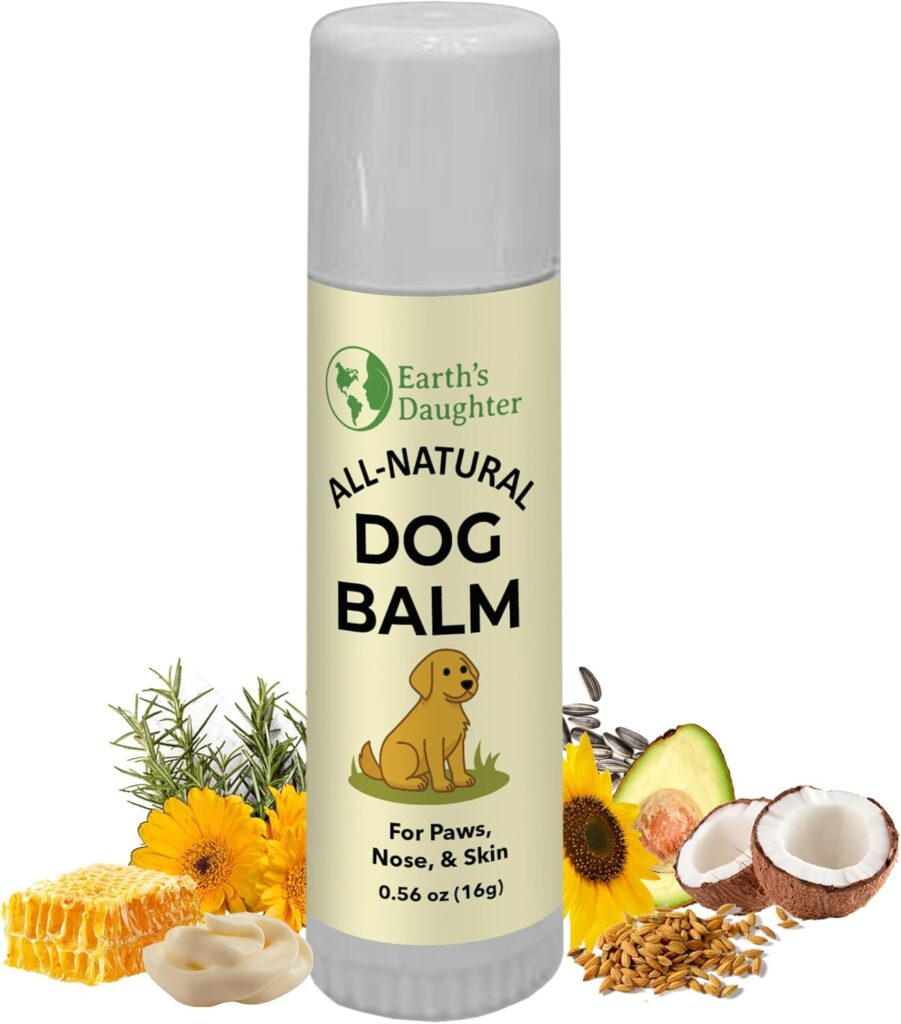Every dog owner knows how much their furry friend relies on their paws for running, playing, and exploring the world.
But dry, cracked, or irritated paws can make walking uncomfortable for your dog and worry you as a pet parent.
Fortunately, there are natural ways to support your dog’s paw health and keep them soft, protected, and happy.
In this post, we will explore 5 ways to support dry dog paws, starting with its causes.
Let’s dive in!
What Causes Dry Dog Paws?
Dry dog paws can result from a variety of factors.
Environmental conditions like hot pavement, snow, ice, and salt can irritate the paw pads.
Allergies, frequent licking, and exposure to chemicals like cleaning products or lawn treatments can also contribute.
Even certain health issues, such as fungal infections, eczema, or nutritional deficiencies, may lead to dry or cracked paws.
Knowing the cause can help you provide the right care and protection for your dog’s feet.
5 Ways to Support Dry Dog Paws
1. Dog Paw Balm
Using a high-quality dog paw balm is one of the most effective ways to support dry paw pads.
Paw Balms provide natural moisturizers such as beeswax and calendula to soothe, hydrate, and protect your dog’s paw pads.
Out of all of the paw balms my dog has tried, Earth’s Daughter’s new Dog Paw Balm is his personal favorite.
This Dog Paw Balm is my go-to for his dry paws because it combines natural, lick-safe ingredients like beeswax, coconut oil, and calendula to soothe and protect rough or dry paw pads.
It’s gentle enough for sensitive skin, versatile enough for paws, noses, or hot spots, and compact for travel or everyday use.
With this balm, your dog gets natural relief and protection, whether on hot sidewalks, snowy trails, or rugged adventures.
Simply apply to your dog’s paws and/or nose daily, and you’re good to go!
2. Limit Harsh Environmental Exposure
Whenever possible, avoid walking your dog on extreme surfaces, like scorching asphalt or salted winter sidewalks.
Using protective dog booties during harsh weather can reduce direct damage, prevent cracking, and keep your dog’s paws softer over time.
3. Regular Paw Cleaning and Moisturizing
Washing your dog’s paws after outdoor activities removes debris, dirt, and chemicals that can dry the skin.
After cleaning, applying a gentle, natural moisturizer or paw balm helps lock in moisture and maintain paw pad softness.
4. Keep Nails Trimmed and Paws Groomed
Long nails can change your dog’s gait, putting extra pressure on the paw pads, which can worsen dryness or cracking.
Regularly trimming nails and keeping paw fur tidy prevents friction and irritation while promoting overall paw health.
5. Balanced Nutrition
A dog’s diet directly impacts their skin and paw health.
Foods rich in omega-3 and omega-6 fatty acids, like fish oil or certain dog foods, can help maintain moisture in the skin and paw pads.
Proper hydration also plays a crucial role in keeping your dog’s paws healthy from the inside out.
Supporting Dry Paws
Dry dog paws are common but manageable with consistent care and attention.
Using a nourishing paw balm, protecting paws from harsh surfaces, and supporting your dog with a balanced diet can make a big difference in comfort and paw health.
By incorporating these steps into your routine, you’ll keep your dog’s paws soft, healthy, and ready for every adventure.
Thank you for reading!
Affiliate Disclosure
Some of the links on this site are affiliate links. This means that if you click on the link and purchase the item, we may receive an affiliate commission at no extra cost to you. I only recommend products or services that I believe will add value to my readers, however some (not all) do pay us to be on this blog. Your support and theirs helps keep this blog running, and I genuinely appreciate it.
Medical Disclaimer
The information provided on this website is for educational purposes only and is not intended as medical advice. The content shared here is not written by a licensed veterinarian, and it should not be used as a substitute for professional veterinary diagnosis, treatment, or advice. Always consult with your veterinarian or other qualified pet healthcare provider before starting any new treatment or making changes to your pet’s health regimen.
